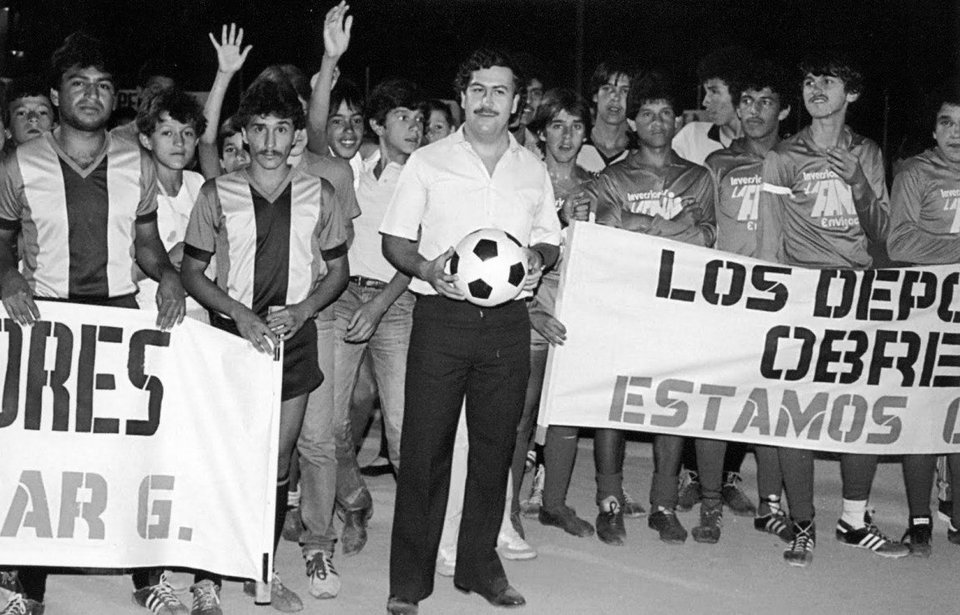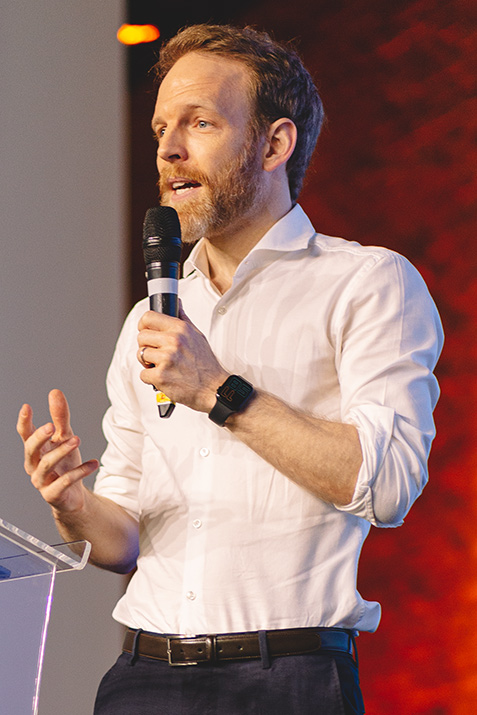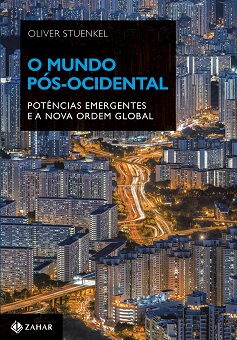
Pablo Escobar, a Colombian drug lord, supported charity and football clubs. Just like any other global corporation, drug cartels engage in corporate social responsibility programs, particularly effective where public services are weak.
Book review: Narconomics: How to run a drug cartel. By Tom Wainwright. PublicAffairs, 288 pages, U$ 16.02 (hardback, amazon.com)
———
Drug-related violence is perhaps the single greatest destabilizing factor in Latin America, causing, quite literally, tens of thousands of deaths per year, which profoundly affects governments’ capacity to protect human rights, promote development and provide public services in many parts of the continent. Half of Brazil’s over 50,000 annual homicides are directly related to the drug industry. Despite the great efforts made by policy makers in the “war on drugs”, the global market for drugs is doing well: Consumption and quality of narcotics have never been so high, and no government attempts to disrupt the drug trade have had a lasting impact on price levels.
In an exciting new book, Tom Wainwright says governments fail to adopt useful policies partly because they do not realize that drug cartels are, above all, sophisticated international corporations that operate just like many of their peers that trade licit goods. Drug cartels have franchise systems, pay royalties, and hire PR firms, lawyers and political risk analysts who monitor how new policies affect the regulatory environment in which they operate.
Since their industry is prohibited, the market lacks regulation or access to public mediators or judges, so violence is often used to enforce contractual agreements (after all, a cocaine laboratory operator can hardly sue a supplier of coca leaf due to delays or bad quality) or to solve contentious issues like access to a US-Mexican border crossing. Still, even famously violent drug lords often seek to establish sophisticated systems to avoid killing partners, such as basic insurance systems that protect the cartel if problems arise.
But drug cartels also have advantages over other global corporations. Most importantly, they are more agile and can globalize their operations quicker since they are exempt from import duties. Whereas General Motors needs to cautiously study trade agreements, the Sinaola Cartel enjoys tariff-free entry into every country due to the Single Convention on Narcotic Drugs, which prohibits the regulation or taxation of their product.
In many other ways, public policies aimed at ameliorating the problem end up helping the drug cartels. Paradoxically, drug lords usually prefer tough laws that involve prison sentences even against minor offenders. After all, due to the frequent difficulties faced to recruit young talent (more than 10,000 employees are violently retired each year and need to be replaced quickly), high prison populations offer a rich pool of applicants who have few other employment options.
Recent trends of decriminalization in several US states are a great threat to drug cartels, as it establishes a legal (and taxed) market, no longer lining the pockets of illegal dealers. It therefore comes as a relief to drug lords that other quickly growing consumer markets, such as Brazil, are far too socially conservative to adopt any progressive strategy that would limit the cartels’ cash flow. Indeed, careful politicians such as Fernando Henrique Cardoso are so aware of the populations’ resistance against smarter approaches that they can only openly embrace them after retirement. Addressing the drug trade and the violence it entails requires seeing it as an economic problem rather than a moral menace yet, while that may work in liberal Uruguay, it seems unlikely to happen anytime soon in places like Indonesia or Brazil.
Narconomics is quite brilliant because, contrary to the reader’s intuition, the book shows how virtually everything the drug cartels do can be explained by relatively simple business considerations. How do you stop recently hired members from joining a rival gang? Quite simple: Have them tattoo your gang’s symbol on their faces, which will tie them to you for life — apart from, of course, making it difficult for them to get a job outside of organized crime. Why is Mexican crystal meth blue and no longer white, as it used to be? The answer is branding: The cartels realized US consumers found it prettier, even though their blue is nothing but food coloring. How do cartels assure stable consumer prices even when there are disruptions in supply (like coca spraying)? Following Wal-Mart’s example, they use their dominant buyer position (monopsony) to establish exclusive relationships with their suppliers.
While the overall impact of drug cartels is, of course, very negative, they are also keenly aware that they need to provide public goods to find acceptance among the population. Some cartels therefore finance health clinics, schools and public security.
Well-researched, Wainwright provides an analysis filled with lots of amazing data and sometimes off-putting details (he gained unusual access to gangs, including assassins) that turn How to Run a Drug Cartel into a page-turner (except for chapters 7 and 8, which are a bit wonkish). In the end, readers will feel inevitably amazed at the clearly nonsensical approach states have taken for decades in a war they will never win.
His discussion of how to read the World Bank’s Doing Business Index backwards to obtain a “Cartel Competitiveness Report” drives home the point that weak institutions make countries attractive for cartels, but may lead to the somewhat simplistic conclusion that strong institutions are a panacea against international drug-related crime. That overlooks that cities like London (in a country marked by strong institutions) are often at the heart of international criminal schemes, several of them related to money laundering, corruption and drug trafficking. In the same way, the growth of drug sales online will further blur the distinction between countries with good and bad institutions when cartels choose where to operate.
Controlled legalization even of hard drugs like heroin will inevitably be the answer in the long term. For example Switzerland, where heroin addicts can get the drug for free from doctors, has actually reduced the number of new users (and associated diseases) because addicts no longer need to sell drugs on the side to finance their addiction. As Wainwright says,
The more I learned about the way the cartels do business, the more I wondered if legalization, far from being a gift to the gangsters, could be their undoing.
It all points to the conclusion that “if you really want to get drugs under control, to put the cartels out of business and protect the public, prohibition is not an effective way to do it.” The same applies to people smuggling. The author writes about a visit to the US-Mexican border and recognizes that spending on border security has failed to reduce the number of migrants entering the United States illegally:
The vast increase in spending on border security has inadvertently transformed the people-smuggling business from an optional, cheap, amateur affair into a near-compulsory, very expensive, and cartel-dominated one. It is a gift to organized crime. (p.251)
None of this suggests that Wainwright condones the work done by drug cartels. Furthermore, Narconomics explicitly states that, as long as it is illegal, whoever purchases cocaine indirectly contributes to torture or murder somewhere in Latin America. In the same way, his explanation of drug cartels’ behavior does not mean he finds the behavior acceptable. Rather, he says, he decided to write a business manual for drug cartels, which will advance the public debate about how to defeat them.
Read also:
Latin America confronts the United States
Big Data: What does it mean for International Relations?
Book review: “World Out of Balance” by Stephen Brooks and William Wohlforth








